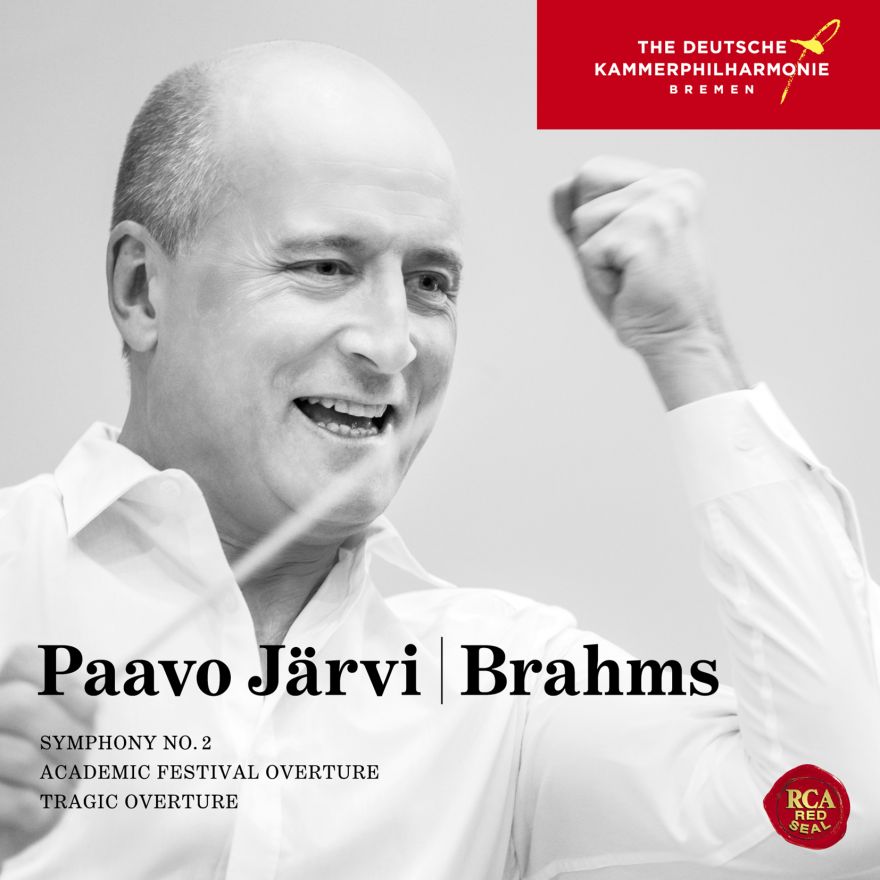Paavo Järvi and the Deutsche Kammerphilharmonie Bremen are currently in Asia where they are performing the complete Beethoven cycle in both Beijing and Shanghai. The international success of their Beethoven cycle in concert and on CD has now been followed with the release of their first recording in the new Brahms cycle on the RCA Red Seal label. An equally resounding success across the globe:
“A Brahms revelation” raved the New York Times of a guest performance of the Deutsche Kammerphilharmonie and cheered the “triumphant performance” of the second symphony. As in New York, Paavo Järvi and his orchestra have also celebrated successes in Vienna and Tokyo with their Brahms cycle, before they went to the studio to record the four symphonies. Symphony No.2 is now released on CD … Paavo Järvi and the Deutsche Kammerphilharmonie Bremen model a slim and clear Brahms sound which is already evident in the opening bars of the symphony, when the theme of the horns stands out above the foundation of the deep strings. The horn melody is the prelude to a work in which the sun often shines. Johannes Brahms, then 44 years old, wrote his second symphony in 1877 on vacation at Lake Wörth. The lovely landscape and the friendly climate have, so it seems at least, left their mark on the music. This is felt by Järvi and his orchestra, when they breathe deeply together and allow themselves time before they enjoy the bright sound of the violins. It flows as fresh and pure as a light summer breeze.” NDR Radio
“Paavo Järvi and the Deutsche Kammerphilharmonie Bremen toured the Brahms symphonies before they recorded Symphony No.2 in the spring of 2015 at Kurhaus Wiesbaden. They used this familiarity with every angle of the score for an interpretation that gives space to spontaneous ideas and it therefore has a very organic, breathing and lively effect … Järvi penetrates deep into the musical and emotional meanings of the score. He reveals a dense motivic network and a wealth of subtle changes of color and mood … creating a slender and moving Brahms sound.” Deutschlandfunk
Brahms’ Symphony No.2 is also “one of the eternal brutes that flies through our Philharmonic and Tonhalle. The second provides everything that we expect from Brahms: autumnal melancholy, the wretched sound of the horns, the slackness of the strings and trumpets, memorable melodies, grand climbs, and this specific element of the “evolving variation,” which Schönberg regards as essential to Brahms’ Sinfonik considered. Of course the market is saturated with many good recordings. You can stop with the great George Szell, the unbeatable Günter Wand, the discoverer John Eliot Gardiner. Karajan was always a very, very good Brahms interpreter. Bernstein pounced on Brahms and poured all his heart blood into it … Now comes Paavo Järvi and, with the Deutsche Kammerphilharmonie Bremen, he tells the story of this piece as a chamber music composition, the layers of which, as it were, create a symphony … This Brahms is alive, bright, no old master, but a fire-head, which at the same time broadened Beethoven’s principles and filled it with new life.” Rheinische Post
